Finland Proper - region of Finland
Finland Proper (Varsinais-Suomen maakunta, Egentliga Finland) is a region in Western Finland with a population of It is the south-west corner of Finland, including much of the archipelago but not the Åland islands.
Regions
- Greater Turku – The Turku metropolitan area is the third biggest in Finland. Here we count it to cover Turku, a few neighbouring towns and some of the countryside to the north.
- Archipelago Sea – The Archipelago Sea is a large archipelago off Turku, reaching the Åland islands in the west and the Gulf of Finland in the east. A maze of thousands of islands and islets.
- Inland of Finland Proper – The inland countryside and the town Loimaa.
- Salo with surroundings – The eastern part of the region. A few towns, partly by the coast.
- Vakka-Suomi – The west coast: the Vakka-Suomi 📍 proper and an additional area in the south.
Cities
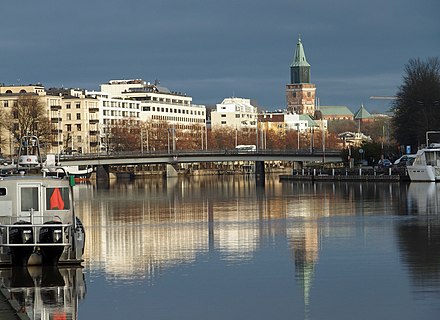
Cities and towns in <span style="color:blue;">blue</span>, rural areas in <span style="color:green;">green</span>.
Greater Turku
The Turku metropolitan area is the third biggest in Finland. The definition here is not the official one.
- Turku (Åbo) – the former capital of Finland, the article covers also Raisio (Reso)
- Kaarina (S:t Karins) – residential areas, bird watching, manors and a former bishop's castle
- Naantali (Nådendal) – the Moomin World and wooden old town
- Turku countryside 📍 – the countryside north of Turku, including parts of Turku itself, Lieto (Lundo), Masku (Masko), Paattinen (Patis) and Rusko
Archipelago Sea

The Archipelago Sea, here the centres and main islands of current and some former municipalities (see also Islands below):
- Houtskär 📍
- Iniö 📍
- Kimitoön – countryside and seaside islands
- Korpo 📍
- Merimasku
- Nagu 📍
- Pargas 📍
- Rymättylä
- Velkua
Inland of Finland Proper
- Inland of Finland Proper 📍: Alastaro, Aura, Koski, Marttila (S:t Mårtens), Mellilä, Nousiainen (Nousis), Pöytyä (Pöytis), Säkylä, Vahto, Yläne
- Loimaa
Salo with surroundings
- Paimio (Pemar)
- Salo – former home of the Nokia mobile phones
- Sauvo (Sagu)
- Somero – an inland town
- Kitula – centre of Suomusjärvi
Vakka-Suomi
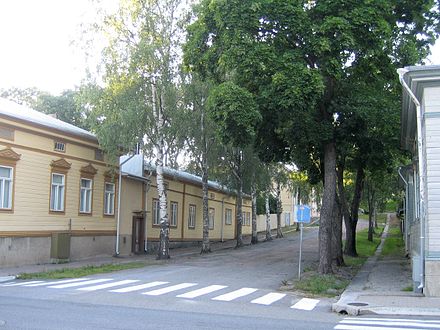
- Uusikaupunki (Nystad) – small coastal town with wooden old town
- Laitila (Letala)
- Kustavi 📍 (Gustavs) – an archipelago municipality reachable without ferries
- Vakka-Suomi countryside 📍 – the west coast countryside: Askainen (Villnäs), Lemu (Lemo), Mietoinen (Mietois), Mynämäki (Virmo), Pyhäranta, Taivassalo (Tövsala), Vehmaa (Vemo)
Other destinations
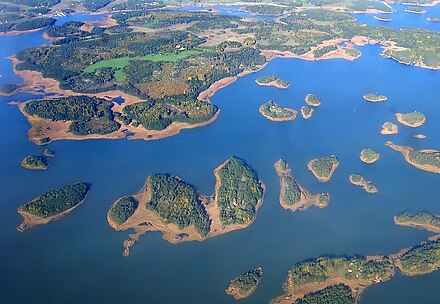
National parks
- Archipelago Sea National Park 📍 and Archipelago Sea Biosphere Reserve. These cover much of the Archipelago Sea, and are described in that article. Roads (with bridges and ferries) through the main islands, ferry services to many more islands.
- Bothnian Sea National Park 📍 starts off Kustavi and Uusikaupunki and continues to the north. Mostly uninhabited outer archipelago, with seals, birds and lighthouses the main attractions. There are some bays with bird watching towers also on the mainland.
- Kurjenrahka National Park 📍 and Vaskijärvi Strict Nature Reserve, with raised bogs, mires, lakes and old-growth forest
- [Teijo National Park](https://www.nationalparks.fi/teijo)[ 📍](https://www.google.com/maps?ll=60.225,22.940&q=60.225,22.940&hl=en&t=m&z=11)
Islands
The islands listed are all significant tourist destinations, with infrastructure for visitors.
- Bengtskär 📍 – skerry with lighthouse by the open sea
- Gullkrona 📍 – island with popular guest harbour
- Jurmo 📍 – remote barren island with special nature
- Nötö 📍 – in the centre of the archipelago south of Nagu
- Själö 📍 – lush island with research station and former leper hospital
- Utö 📍 – the outermost inhabited island
- Örö 📍 – former coastal fort; meadows with rare butterflies, old forests and nice cliffs and beaches
Understand
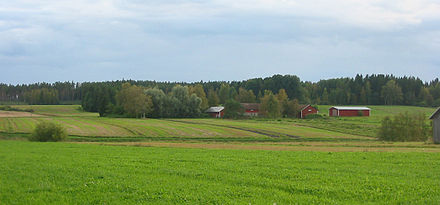 See also: Swedish Empire
See also: Swedish Empire
The name "Finland" was in medieval times applied only to this part of the country, hence the region's present name. This was the gateway for western culture and a central part of medieval Sweden. Turku remained the biggest town in Finland until the late 19th century, long after Helsinki had become capital. Turku is still a one-night cruise away from Stockholm and yachts from Sweden, Helsinki, and Turku are common in the archipelago.
While some people in the archipelago and on the coast still make their livings from the sea, with fishing and seafaring traditions very much alive, inland is more focused on agriculture. The ancient seabed is fertile soil and much of Finland's grain and sugar beet crops are from here, and nowadays greenhouses are abundant. Agriculture is also important in the archipelago, although fields are smaller there.
Talk
The southern coast and the archipelago are mainly Swedish-speaking, while the inland, the western coast and the northern parts of the archipelago are Finnish.
Get in
Turku is well connected with the rest of Finland. You can get in by direct trains from Helsinki (to "Kupittaa") and Tampere (and sleeping cars from Lapland), however if you are travelling along the Bothnian coast, by E8 or otherwise, coach or car should be your transportation of choice. Turku and Naantali have cruise ferry connections with Sweden. Turku airport has flights mainly from Helsinki, Mariehamn and Stockholm, but also regular flights from odd airports in Europe, often including Riga and Gdansk.
Turku is the hub of most connections. You can get off the train in Salo or Loimaa, coaches other than special express ones have stops along the way and minor ferries from Åland have their destinations closer (see Archipelago Sea#Get in), but mostly you need to transfer in Turku – and you probably want to stay there for at least some time, regardless of where you are heading.
Coming with own yacht is reasonably common: along the coast, from Stockholm Archipelago via Åland, directly from Gotland or from Hiiumaa or Haapsalu in Estonia. The outer archipelago is hard to navigate, so you may want to use the main fairways. From the south (the open sea), Mariehamn, Utö and Hanko are the main entry points. See Boating on the Baltic Sea, Boating in Finland and Archipelago Sea.
Get around
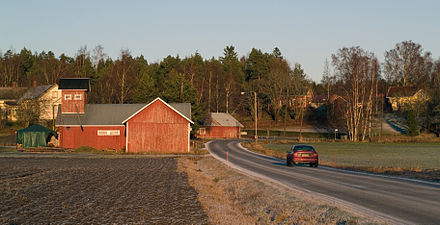
By bus
The main towns are well connected with coaches, but check timetables in time for minor villages – there may not even be daily services. Also watch out for express coaches not stopping at your stop. If using route planners, note that they sometimes use odd names for the stops and sometimes only know about the main stops (if it is not an express service it will have stops at most a few kilometres apart).
Turku, Raisio, Naantali (including Marimasku, Rymättylä, Velkua and part of Askainen), Kaarina, Rusko (including Vahto) and Lieto have common bus tickets (the "Föli" cooperation), valid also on some regional buses, generally any bus or coach with a line number (except Onnibus). Thus you can get to some places costing €10 on a coach for €3 on the regional bus. See Turku#By bus.
Some of these regional buses have lines extending farther; if you are going outside the area, you need to buy a normal ticket. Among these are 413 to Aura; 117–119 to Masku, Nousiainen and Mynämäki; 702 to Kimitoön; 703–709 to Paimio, 801–802 to Pargas and 901–903 to Pargas, Nagu, Korpo and Houtskär.
Matkahuolto Reittiopas is a route planner for travelling by bus and coach. For simple connection the main Matkahuolto page may work better.
By train
Trains of VR can be used between Turku, Loimaa and Salo. Revival of regional traffic has been discussed since the 1990s, but as of 2020 plans are still in the blue.
By boat
See also: Archipelago Sea
Many islands in the archipelago have ferry connections, but outside the main routes you may need a boat (or kayak). There are charter and taxi boat services.
By bike
Bikes are useful for getting around, but to avoid biking along a narrow shoulder or a minor road ending in the wood, some research is needed. From Turku, cycleways extend to Naantali, Mynämäki, Vahto, Paattinen, Lieto and Lieto station, Piikkiö and Pargas. There are well-marked regional biking routes, mostly along cycleways, from Turku to Naantali (routes 2 and 4, and the Archipelago Trail route), Lieto (9), Piikkiö (10,11), Paimio (11) and Pargas (22), and from Turku centre to Turku's major islands (1,12). The Eurovelo 10 route around the Baltic Sea is marked from Turku eastwards (following cycleways to and through Piikkiö), northwards it can be used, but there it is not yet marked.
There are cycleways in most town and village centres. In Turku most areas outside the centre have good cycleways where needed, while a visit by bike in the centre requires some confidence, following the existing cycleways or unmounting the bike as needed. Turku seldom gives directions for bikers when a biking route is interrupted by roadworks, fairs or similar.
By taxi
Most taxis in Turku use the Taksidata call centre, in the inland countryside Taksi Länsi-Suomi dominates.
- Taksi Länsi-Suomi, +358 20-003-000 (extra charge?). Serves most of Finland Proper. Call centre in cooperation with Taksi Helsinki. Available also through the Valopilkku app. Flag fall M–F 06:00–20:00, Sa 06:00–16:00 €4.90, other times €8.90; 1–4 persons €1.49/km + €0,99/min, 5–8 persons €1.89/km + €0,99/min 2022-06-19
- National smartphone apps: Valopilkku, 02 Taksi, Menevä, Taxi Booker (iTaksi), Taksini
See

Turku is the only larger city in the region, and as the oldest and former main city of Finland, it dominates the list of man-made attractions. For art lovers, its art museum has a good collection of paintings from the "golden age" of Finnish art, in late 19th and early 20th century, and more modern art is on display there, in a few other museums, and in a big assortment of galleries. For a quick sampling of Finnish biotopes, the displays of the biological museum are excellent, and nice also for children.
The medieval castle and cathedral of Turku are the classics for domestic visitors. There are medieval churches all around, and also younger churches worth a visit. In Turku Aboa Vetus et Ars Nova has an ongoing archaeologic display of cellars and streets of medieval Turku as found below the ground. Older findings are more difficult to see or understand, but there are lots of Bronze and Iron Age sites around the region. There are quite a few historic manors, with e.g. Louhisaari Manor (Villnäs slott) in Askainen open for the public in summer. The summer residence of the President of Finland, Kultaranta (Gullranda) is in Naantali, with guided tours of the garden.
For traditional living and crafts, in addition to the Luostarivuori (Klosterbacken) handicraft museum in a neighbourhood that survived the great fire of 1827 and the Kurala living museum village (with historic toys for children to use, and sheep to caress), both in Turku, there are small local history museums about everywhere, some with their own specialities. In the smaller museums there is seldom written information in English, so call ahead to get a guide confident in their English.
Seafaring has been important, so in addition to Forum Marinum in Turku, with a full-rigged ship, a wooden barque and many smaller vessels, there are also local museums on the theme, such as the maritime house in Nagu, the one on traditional boats in Houtskär or the pulley museum in Iniö. There are tours to the lighthouses of Bengtskär, Isokari and Utö.
The sceneries of the archipelago are much loved by locals and certainly worth seeing. There are cruises available at least from Turku, Kasnäs, Nagu and Uusikaupunki.
There are several good birding spots. For migrating birds southern islands of the archipelago, such as Utö, Jurmo and Bengtskär are good, as the birds rest or wait for suitable weather there. There are also easy to reach wetlands, such as Järvelä, Kuusistonlahti and Rauvolanlahti in Kaarina. Farther from Turku, Mietoistenlahti, Oukkulanlahti and Otajärvi in the Vakka-Suomi countryside and Vajosuo in Kurjenrahka National Park are good birding spots. For birds of the woods, Ruissalo in Turku and Pukkipalo by Kurjenrahka are good locations.
Itineraries

- Archipelago Trail – A 250 or 125 km route around the archipelago, using ferries between the islands. Available by bike, car or coach.
- Hanko-Uusikaupunki by boat – the main leisure fairways through the Archipelago Sea
- Hämeen Härkätie – The old route leading from Turku to Tavastia in the inland. Parts are museum roads.
- King's Road – The road along the south coast since medieval times.
- Kuhankuono trail – A hiking route through the forests and countryside from Turku to Kurjenrahka National Park and farther to near Pyhäjärvi. Part of it is accessible by terrain bike.
- Saint Henry's Way – St. Henry is regarded the national saint of Finland, although not formally recognized by the catholic church. The trail leads through Finland Proper between Köyliö and the cathedral. Groups do part of the trail yearly, all of it every third year.
- Saint Olav Waterway – One of the routes of the Nidaros Path pilgrimage leads to Nidarosdomen in Trondheim from Turku Cathedral, through the archipelago by foot and keel. The route can be used for slow tourism also by non-pilgrims.
Do
The main distinguishing feature of the region is the Archipelago Sea. Getting in by ferry will allow you to see some of it and a cruise will allow you to get closer, but to really experience it you might want to charter a yacht or hire a sea kayak. If you don't have the skills, you can at least get on a manned afternoon yacht cruise, and you can get on guided kayak expeditions also, or just on an evening tour from Turku with an experienced guide. Fishing trips are arranged from many small resorts, often with some presentation of the archipelago nature at least on request.
For hiking, there are shorter and longer trails. The main destination is the Kurjenrahka National Park, with trails suitable for a day or a (short or long) weekend. Nature trails of a few kilometres can be found in most places.
The Moomin World theme park attracts children from far away, and adults all the way from Japan. A crowded milieu is not the best to experience the world of Tove Jansson and the Moomins, but some real efforts have been made.
In summer, everybody goes swimming in the sea or a nearby lake. Most cottages have at least a swimming jetty by the sauna – and sauna bathing is as fundamental a part of the Finnish summer as the swimming. Winter swimming for the public is arranged at least in Kimitoön, Kustavi and Turku.
Events
.jpg/440px-Tall_Ships_Race_Ships_-_Turku_-_Finland-22_(36138448232).jpg)
There are rock, jazz or other music festivals most summer weekends at least somewhere. Few of them are strict with the genre: pop, rock and jazz can be performed side by side.
Classical music festivals are not much of festivals, but series of concerts, often some of them in places not otherwise used as concert venues. Turku, Naantali and Pargas have well established festivals in the summer.
- Ruisrock in Turku each July: Finland's oldest rock festival.
- Baltic Jazz in Dalsbruk, Kimitoön: a relaxed music festival annually in July.
Eat
In the archipelago fish has always been important, and fish is available in most restaurants, although what is served does not necessarily reflect the local traditions. Sweet rye bread (Skärgårdslimpa) is also often served. See Archipelago Sea#Eat for a discussion. Otherwise and elsewhere what you'll see is more or less standard Finnish fare.
Drink
Turku is the main nightlife destination. Elsewhere nightlife is often concentrated at a restaurant, a guest marina or a camping ground, but may be quite lame most nights in minor towns (and many marinas and camping grounds are quiet). There may be events at community centres, and social dancing is regularly arranged at some community centres and dance pavilions.
There are Alko stores in the bigger towns, and there may be Alko delivery points elsewhere. If you want to have regular wine or anything strong off licensed premises, check where to get it or pack in.
Potable water is scarce in the wild. Water is available at any lodging (except some cottages), any manned camping ground, and in most marinas. In a pinch you can ask at fuel stations or at any house.
Sleep
There are normal hotels in Turku and in some other places, but for most of the area bed and breakfast style accommodation (with or without breakfast), cottages and camping are what to look for. In July reserving accommodation in time may be necessary. Off season many places are closed.
Some cottages are available only for full weeks, but most of them are available also for just overnighting, and in shoulder season they are usually rented for a weekend. Some holiday villages also offer rooms. Cottages are often a side business, and a restaurant, fishing trips or whatever may be available through the main business. There are also cottages far from where the landlord is living, and you might be more or less on your own. Cottages vary from 6 m² modules in a row to houses with proper kitchen and private sauna and beach (with or without running hot water). If you don't like surprises, check. Price may give a hint, but also cheap cottages may be in a good spot with services available. Linen are usually available for about €10/set.
Wild camping is mostly possible according to the right to access. No campfires, leave no trace. In some areas suitable woods are scarce, on one hand near towns, on the other in the archipelago, where islands may be small or most available ground put to use. Near towns, wild camping may have the risks of sleeping rough, except by lean-tos of hiking trails and similar, where it is regarded normal.
Stay safe
Watch out for elk and deer when driving. Roe deer and American white tailed deer are abundant.
Keep warm and afloat when at sea. Be especially careful with children by the shore.
Ticks are common, and can carry Borreliosis or TBE.
If trekking or picking berries in the autumn, have some bright red clothing, as there might be hunters around.
There are bears and wolves, but there have been no reports on them threatening people. You are lucky if you see any trace of them.
There are adders (vipera berus) – keep your distance. If you get bitten, stay calm and call 112 to get advice. The bite should get treatment, although it seldom is dangerous for non-allergic adults. There is also another snake species, the grass snake (natrix natrix), which is non-venomous.
Go next
- Baltic Sea ferries from Turku port to Stockholm in Sweden
- King's Road from Turku via Helsinki to Vyborg in Russia